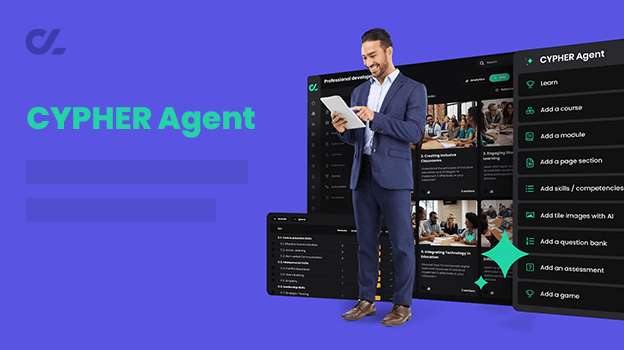
11 ways your LMS launch could go off without a hitch
Anyone who’s ever been in charge of launching a company LMS knows that it takes a lot of work and dedication. However, there are things that you can do to make sure that learners will not only adopt the new platform, but will remain engaged for a long time. That is why we have prepared this handy guide for a successful LMS launch:
-
Define your LMS goals
For a successful LMS launch, companies should have clear goals and a plan on how to achieve them. Conduct a Training Needs Analysis to see what employees need to know and how this aligns with your business goals. This stage will also help you measure learning later on.
-
Get everyone on board
Important stakeholders such as the CEO and middle management should be on board from the very start. They should have a clear view of why using an LMS is important for the business, and should be provided with constant updates. Gather a team with different roles: administrator, instructor, instructional designer, and more.
-
Create a learning experience map
A learning experience map helps you visualize the learner’s journey from the beginning to the end. It helps you make important decisions such as whether learners sign up themselves or are given an account. Learners also need to see how training programs are interconnected and how to make the most of each learning opportunity.
-
Get to know the platform
Be curious. Get to know the different aspects of your LMS, such as how features and integrations work. Take some time to learn about automation, gamification, reporting tools, and other more advanced tools created to engage your learners. Keep in touch with your LMS provider and get help from them if needed.
-
Make the LMS your own
The platform should feel as 100% your company and a reflection of your brand. Customizing the logo, color scheme, and main portal are just some of your options. You can integrate with different tools that you normally use. If you need something extra, get a custom branded app!
-
Make learners a part of the process
Learners will be more likely to adopt the LMS if they feel involved in the process. You can ask for their opinions on what you should name your portal, their preferred content format, their favorite way to communicate with each other. That should also make them eager to learn more about the platform.
-
Have enough content planned out
The platform needs to be user-friendly and have a beautiful interface. However, the magic is in the content. Learners will grow bored with the LMS if there is nothing for them to learn. Plan ahead and create courses even if they are not published right away. Ideally, learners should find a courses and at least a learning path to begin with.
-
Start with a pilot
Starting smaller is a great way to test the platform before a full launch. Choose a region or a department that can act as your testers and give valuable feedback for improvement. It also helps you troubleshoot if there are any problems that users might encounter.
-
Create a launch campaign
To ensure that learners will adopt the new platform, you need to create some anticipation. For example, you can release teasers to create some hype. Create polls or surveys asking for what they want from training. Of course, the easiest way would be to also have an email campaign with updates ahead of the official launch day.
-
Create a comprehensive learner’s guide
If your LMS provider is anything like CYPHER, you will have comprehensive guides and help to get learners on track from day-1. You might also want to create your own internal documentation containing enrollment instructions, information on how to complete user profiles, etc. Use the learning experience map for optimum results.
-
Hold a launch event
The day of the LMS launch is very important. This is the moment to make a good first impression and celebrate your hard work so far. The company can host an offline office party, which is a great opportunity to talk to get initial reactions. However, for a larger company with different offices it’s also possible to host an online event.
Visit our Blog for insightful posts on training and e-learning.







